Denise Sakaki is a freelance food writer and photographer who…
Denise Sakaki travels to The Islands Of Aloha to discover the fifth taste of the often overlooked city of Hilo.
By Denise Sakaki
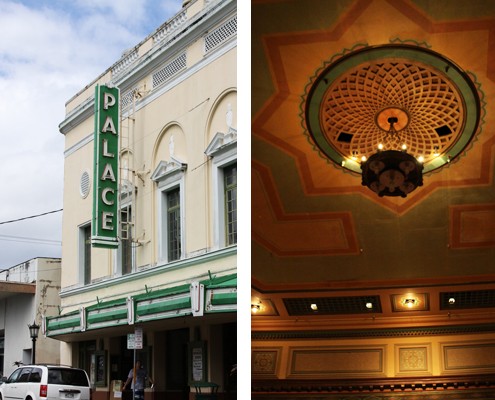
Sweet. Sour. Salty. Bitter. Early twentieth century Japanese scientist Kikunae Ikeda identified what is considered the fifth taste, umami, when he discovered how foods with high amounts of the amino acid glutamate enhanced people’s enjoyment of food. It blesses a dish with a uniquely rich depth of flavor, giving umami an almost mythic status. The same could be said of the umami of memory that can reside within a place. The quiet city of Hilo on the island of Hawai’i is permeated with the sights, flavors and history of a kind of experiential umami. Much like an exotic ingredient, it is a city that has an acquired taste, one that goes beyond the traditional notion of what a tropical paradise is.
Hilo is often referred to as the city to pass through while en route to visit Pele, the tempestuous Hawai’ian goddess of fire who resides in the active volcano Kilauea. What could lovingly be called the city’s vintage shopworn charm, first-time visitors may overlook Hilo, which would be a shame as it is the opportunity to take in a working city that preserves a true sense of the mixed culture of the island. A population of over forty thousand people, Hilo is made up of a high percentage of descendants of the original plantation workers. They came from all over Asia and the Americas during the 1800s when sugar was the booming industry in the U.S. territory days of Hawai’i prior to its attainment of statehood in 1959. Agricultural wealth built the city, and even after several generations, the downtown area of Hilo has remained remarkably unchanged. With the recent dramatic activity of Kilauea at the nearby Volcanoes National Park, the sleepy town of Hilo has perked up with more visitors seeking an audience with Madame Pele. This has provided visitors a precious glimpse of a place rich with the umami of a food culture strongly influenced by memories composed of sweet, savory and a touch of bitterness, with a past too vital to ever forget.
Sweet
There’s no potent sweetener like the sprinkling of nostalgia. The glowing marquee of the Palace Theater on Haili Street was the cultural jewel of the city when it was first opened in 1925, during eve of Hollywood’s Golden Age. Redwood brought all the way from the Pacific Northwest built up its airy and open auditorium, its walls carved with incredible classic detail, curving around the stage to enhance acoustics. To accommodate the building’s limited size, it was one of the first theaters to have the upwards-angled stadium seating that’s prevalent in most theaters today. This was the gathering place for the Mickey Mouse Club, and the site of many feudal duels when old samurai movies would play on the weekends for packed audiences. Renovation efforts from the community have kept the Palace Theater doors open, and while the Mickey Mouse Club no longer convenes there, independent films and live cultural shows continue to cultivate a new generation of Palace Theater supporters.
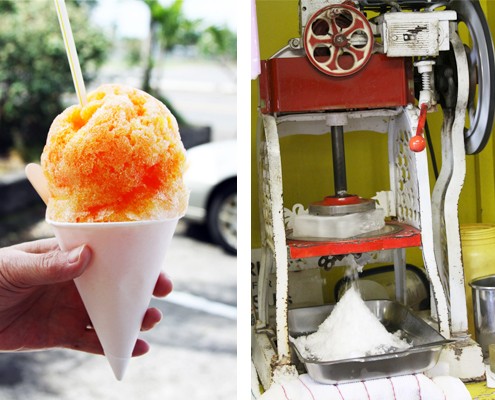
The sweetness of youth inspires one to visit an unlikely, but no less special place — Itsu’s Fishing Supplies. A small bait and tackle shop that sells local bento lunches, Itsu’s has been considered the best ice shave (or shave ice, depending which island you’re from) on the island. Located on Pi’ilani Street in a rickety old white house with bubblegum-pink detailing, Itsu’s sits within sight of the Edith Kanaka’ole Tennis Stadium where the annual hula competition, Merrie Monarch Festival, is held every spring. Even without the rush of festival crowds craving a snack, Itsu’s has been a local favorite for decades. Now into the family’s second generation of owners, the hours may be erratic and the ice shave is only available after one in the afternoon, but they continue to run their shop with homemade syrups in the familiar flavors like blue vanilla, red strawberry, and white coconut. What keeps Itsu’s a favorite is the texture of the ice – it’s like fresh powdery snow. They use a heavy metal ice shaver that looks straight out of the Depression Era, spinning a solid frozen block into feather-light ice shavings that are packed tightly in a round dome atop a paper cone, and then soaked in a sugary syrup. It’s a local dessert that hasn’t changed much since its plantation days when field workers would use their machetes on ice blocks, shaving down the flakes into cups and drizzling fruit juice over it. While more modern variations of ice shave include ice cream fillings or a topping of sweetened condensed milk or the starchy-sweet red adzuki beans, the simple pleasure of a sweetened ice dessert on a hot day has never changed.
Sour and Savory
For the yin of a sugar craving, there is the yang for tart and salty. Almost bordering on discomfort, sour and savory flavors resonate with sense memory – try not to salivate at the thought of biting into a wedge of lemon or the salty crispness of a potato chip. In Hilo and all over Hawai’i, the integration of nationalities created a sour and salty subculture.
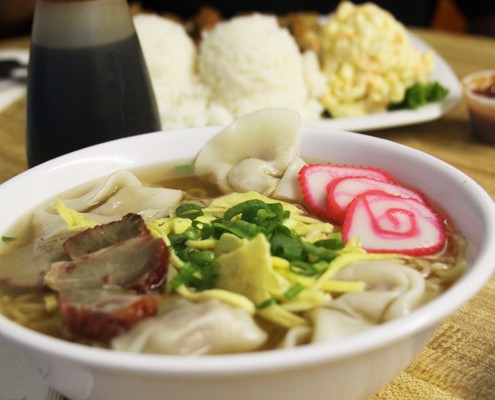
Throughout Hilo and most cities throughout the islands, the people have grown up around crack seed stores. Sounding more like an illicit drug ring, the term, “crack seed,” came about as a result of Chinese immigrants who brought their salty-sour method of drying fruit and fish to protect food supplies from humidity, as well as imparting a face-puckering intensity of flavor. Fruits were preserved, seed and all, and cracked open to expose the seed, leading to the name “crack seed.” This evolved into popular neighborhood shops stocked with shelves lined with glass apothecary jars filled with ingredients like plums, apricots and even dried squid, rendered wrinkled and inscrutable, heavily dusted with a sweet-sour red powder called li hing. It was the childhood favorite of many who would save their pennies for this tart treat, challenging one another to see who would flinch first from the intense flavor. The popularity of the crack seed store has waned with most shops fading into memory, but the craving for the mouthwatering flavor persists, preserving their status as a mainstay in snack aisles of local grocery and drug stores.
Another dish that emerged from the islands’ cultural melting pot is the salty noodle soup, saimin. It’s a combination of Japanese ramen and Chinese-style thin noodles, resulting in a heavily salted dashi broth full of crinkly noodles, slices of Hello Kitty pink-dyed kamaboko (steamed fish cake), a halved boiled egg, shreds of char-siu pork or the ubiquitous mystery meat Spam, and a rough chop of cabbage with a finish of scallions sprinkled on the top. In the same way that one would regard a creamy plate of macaroni and cheese, this noodle soup is a bowl of pure comfort. In Hilo, Nori’s is a favorite among locals for ordering a signature bowl of saimin. Perfectly chewy, wrinkled noodles are served in the savory shoyu-seasoned broth with all the local trimmings, giving their “Hilo Style” saimin a satisfying finish. Sitting in Nori’s, the place is awash in the smells of local multicultural foods like sweetly spiced Japanese-style curry or the distinctly heady aroma of slow-cooked taro-wrapped bundles of Hawai’ian pork lau lau. The furtive nature of umami to produce complex taste reactions can be like the sour bite of a childhood crack seed store snack, combined with the savory comfort of saimin – a single bite and it can send a person home.
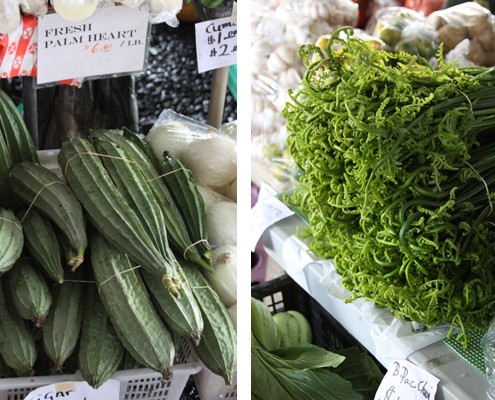
Like the appreciation for sourness, the Western palate has yet to completely get on board with bitter as a desired flavor. Bitterness in food tends to be doused with sweetness, the way sugar is heaped on grapefruit, but sometimes there is something lost when subduing a natural flavor. Walking through Hilo’s extensive Farmers Market, bitter is as equally embraced as its more widely accepted sibling flavors. Scaly, ridged long bitter melon are heaped on vendor tables, along with bouquets of fiddlehead- topped baby ferns called warabi, popular in salads. Growing wild in the rainforest-like conditions of Hilo, warabi can give off an overly bitter flavor if not par-boiled before being eaten, but the ferns retain some of the pleasantly slight astringent qualities similar to cruciferous vegetables like broccoli.
Over two hundred local growers and artisans come out for the Hilo Farmers Market. What started out as a handful of farmers selling their goods from the back of trucks parked in a gravel lot in 1988, it has grown into an open market that takes over two sides of the street, on the corner of Mamo Street and Kamehameha Avenue. Open every day, it’s a year-round farmers market that dutifully nourishes the city of Hilo with fresh, inexpensive produce that grows easily in the tropical climate like papayas, guava and the stubby tart “apple” bananas. Prepared foods are laid out on street-facing tables, offering local favorites like rice musubi filled with slices of Spam, bright red hot dogs, or Portuguese sausage. Unusual tropical fruit like starchy jackfruit, pulpy-sweet soursop with spiny dragon-like skin, and bunches of red-maned rambutan litter the edible landscape. No flavor profile is ignored in this impressive open market, and for many cultures, bitterness in food is a reminder of hardship, and the city of Hilo is no stranger to bitter times.
There is a note of irony that the location of the vibrant Hilo Farmers Market is on the bare, pockmarked concrete lots where a tsunami* tore into the city not once, but twice. In April of 1946, a massive earthquake in the Aleutian Islands sent an ocean surge that claimed a hundred and twenty-two lives, destroying the Hilo waterfront. Sixty-one more souls were lost less than twenty years later, in 1960, when an earthquake in Chile caused another tsunami to rush towards the island of Hawai’i, again focusing much of its deadly force upon the city.
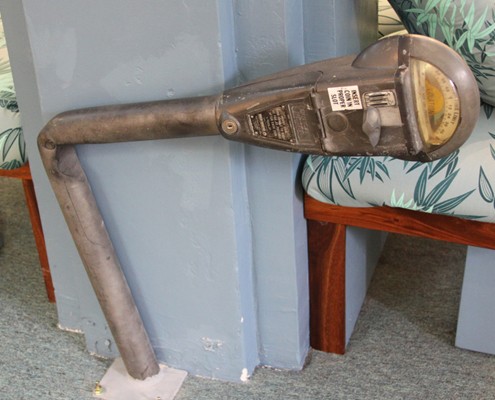
Viewing the exhibits and photo archives at the Pacific Tsunami Museum in downtown Hilo, the imagery of upturned buildings, people clinging to the tops of trees or being swept away to the open sea brings back ghosts of recent disasters like Sumatra to haunt one’s memory. Hearing stories of parking meters bent in perfect unison from the singular surge of the ocean’s force, it’s eerie to see an actual meter on display at the museum bowed in a near ninety-degree angle with the day’s collection of change still trapped inside. Even with the grainy images of Hilo’s archives and the patina of time to distance these incidents from the present, the collected stories of tsunami survivors are as powerful as the ocean’s inconceivable force. To truly understand and appreciate a city is to embrace its history, however tragic. Located in the concrete-walled historic bank building, the Pacific Tsunami Museum is not only an elegy to the city’s devastated past, but a monument to the people who refuse to be chased away by a raging sea.
For whatever destruction the elements have unleashed on Hilo, the residents respond with stubborn ingenuity. Wide open flat stretches of parks lie where the original city waterfront buildings stood, surrounding Hilo Bay, never to be built on again with the understanding that a tsunami’s return is ever present. Having a treacherous ocean as a neighbor means coming to terms with the mindset of coexistence, and the bitter memories of loss are balanced by the residents’ persistence to preserve a home they love.
Within the working city of Hilo lives the collected histories and cultural flavors that generate the sublime mystery of umami. It’s in the family dishes that are prepared in homes and the humble comfort foods offered in restaurants that preserve an edible imprint of the city’s soul. The persistent rainfall that keeps the area green and lush has trapped within its droplets a brightness that is dissipated in the air, mixed with the loamy organic smell of volcanic earth and a saline breath of the sea, perfuming the air with a harmonious reminder of man and nature. For whatever may be swept away with a tidal pull, the quiet strength of Hilo is like the enigmatic nature of umami, in that it can deepen a single flavor, but at the same time enhance them all, dwelling in every aspect of the city’s past and present, strengthened by the lives who rebuilt it and continue to keep vigilance over this working city by the sea.

Hilo Sourcebook:
The Palace Theater, 38 Haili Street, Hilo, HI 96720-2802, (808) 934-7010 http://www.hilopalace.com
Itsu’s Fishing Supplies Inc., 810 Pi’ilani Street, Hilo, HI 96720, (808) 935-8082
Nori’s Saimin & Snacks, 688 Kinoole Street, Suite 124, Hilo, HI 96720, (808) 935-9133
Hilo Farmers Market, Located in Historic Downtown Hilo, on the corner of Mamo Street and Kamehameha Avenue. Open daily from 7am-4pm, but main market days with all food and craft vendors are Weds and Sat, from 6am-4pm http://www.hilofarmersmarket.com
Pacific Tsunami Museum, 130 Kamehameha Avenue, Hilo, HI 96720, (808) 935-0926, http://tsunami.org
*Writer’s Note: Hilo was thankfully not seriously affected by the most recent and devastating earthquake that struck Japan. While the USGS released a tsunami warning for the state of Hawai’i and there was an evacuation of all flood zone areas, including the city of Hilo, the city was thankfully spared from the incoming wave and residents could safely return to their homes and businesses by late afternoon on March 11th. The tsunami did cause damage along the western Kona coast, as it faces the direction of the wave’s energy coming from Japan and there were some areas where the water surged as far as 100 feet inland. There was also damage to residential homes and businesses throughout the islands, including Oahu and Maui, but thankfully, no casualties have been reported to date.
Denise Sakaki is a freelance food writer and photographer who is always searching for the connections between food and personal experience. She is the creator of the food blog Wasabi Prime and contributor to Serious Eats, 425 Magazine and Drink Me Magazine.

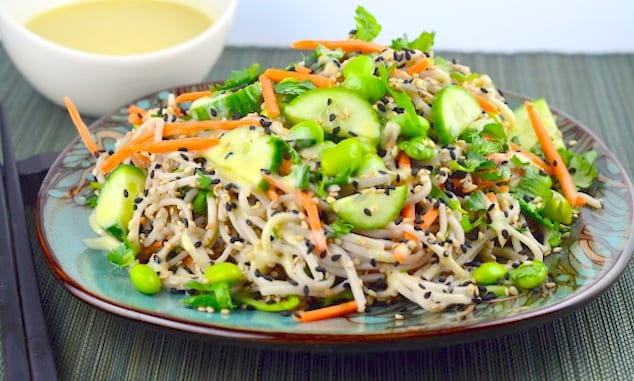
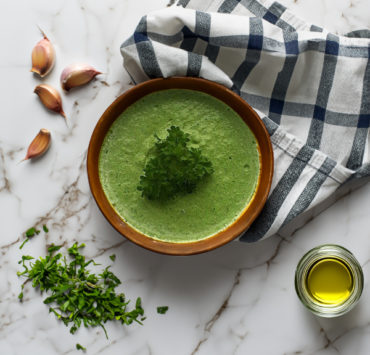
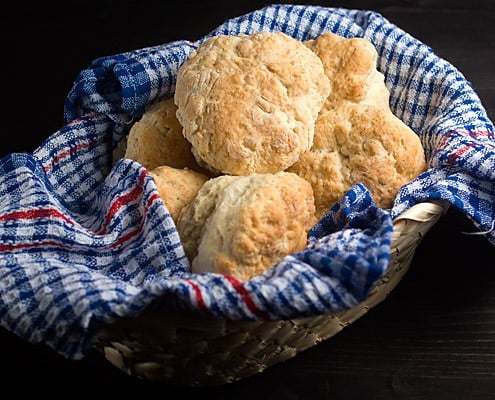
WOW!!! never have i read so exacting an article about the savories of good old Hilo. This ‘ko-tonk’ young lady truly did a remarkable job….makes one taste every word so befitting of the foods of Hilo.
:D hahaha – best. comment. ever. Glad you liked the article – love you lots, Uncle and Auntie! xoxo, the “ko-tonk”
Wonderful, in-depth, salivating article. where can I get me some unami?
We are dying to go to Hawai’i and you have definitely peaked our interest on Hilo! Thank you so much for introducing us to a new food destination!!!
Oh my….what memories!! I grew up in the 1950s – not in Hilo, but in Waipahu (on Oahu) – on the old Oahu Sugar Plantation (no longer there). We kids would save our allowance for trips to Arakawa’s Grocery – and I STILL salivate at the thought of li hing mui. Shiro’s Saimin in Aiea was our saimin place – and thankfully its still there hardly unchanged. Went to Hilo several times as an adult (bringing my children along on their first trip to Hawaii) and they also fell in love. Then, just a few years ago we were traveling thru the west and stumbled upon Gallup, New Mexico. Walked along their old main street – and it was like being back in Hilo and Waipahu again….wonderful, wonderful.
hello,
we just came back from waipahu. looking for the name of a saimin stand which was next or close to a marigold bar on waiphu street. up the street of arakawa’s, take a right and it was there. This was in 1953/54. we went to the plantation village, no one could recall the saimin place. thanks susan
I personally have a tendency to agree with pretty much everything that is
written within “Hilo: Discovering Umami In Small Town Hawai?i – Honest Cooking”.
Thank you for all the actual info.Thanks for your time-Billy